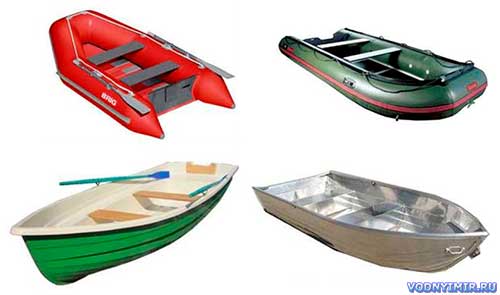Classification of small-sized vessels

1. Classification of small-sized vessels by purpose
Transport vessels — boats and motor boats serving for the transportation of passengers and cargo, including pleasure boats-taxis, transport, service, traveling and other vessels with a passenger capacity of less than 12 people.
Special small-sized vessels are designed for various types of work on the water and are usually specially adapted for this. These are commercial, timber-floating, expeditionary, rescue, training vessels, vessels for servicing floating bases of the fleet and navigational floating and shore equipment.
Ship's boats are divided into rescue and working ones. Lifeboats are built in accordance with special international rules, they serve to rescue the crew and passengers in the event of a ship accident. Working boats are designed for the maintenance of the vessel and its crew, the production of ship work, for training and physical training of teams.
Racing sports vessels are used for competitions and training. The hulls and engines of racing vessels are designed with the expectation of achieving a maximum, often short-term speed. This usually leads to a decrease in the navigational qualities and maneuverable elements of the vessel and the motor life of its engine. Motor and sailing racing and sports vessels are divided according to a special sports classification.
Individual use vessels (amateur) serve to meet the cultural, transport and material needs of the population. This is the most diverse and largest group of vessels. Out of the whole number small-sized vessels, individual use vessels account for more than 90%.
Vessels of this group have outboard and stationary engines of various brands and a variety of dimensions, contours and hull strength.
Special appreciation was given to motor boats and pleasure boats — pleasure craft, mass-produced by our industry for sale to the public. In accordance with GOST 19105-73, the gross capacity of these vessels is up to 10 registered tons, and the passenger capacity is up to 12 people. In addition, amateur boatmasters build boats and motor boats on their own.
2. Classification of small-sized vessels by navigation area
Conditions for sailing a small-sized vessel, especially on long hikes, are very different. The route can run in the sea, lake, reservoir, out of sight of the shores and coastal marine areas. A river difficult for ships with a fast current and shallow depths, along which the vessel is moving, is replaced by a wide reservoir, and then a sluice channel with intensive navigation, etc. Even in one area, the degree of difficulty of swimming is not always the same. Depending on hydrometeorological and other conditions, the nature of swimming often changes. For example, swimming in a storm in open water spaces is different from swimming in calm; swimming before and after water releases through dams, below and above them is also different, etc.
Changes in swimming conditions, and this is usually associated with a change in the area where the vessel is moving, can cause deterioration navigation (seaworthiness) qualities of the vessel, its methods of operation, including when choosing a course and steering. Strong agitation of the water surface can dramatically change the seaworthiness of a vessel not adapted to sailing in a storm and cause unforeseen complications.
Vessels entering open waters should have good seaworthiness (buoyancy, stability, unsinkability), and vessels navigating on small rivers should have a minimum draft and good turnability.
In accordance with the conditions of navigation in various sea and river areas, vessels, depending on their seaworthiness and design data, strength, equipment and technical condition, are divided into classes that do not depend on the main linear dimensions. The classification of vessels is carried out by technical supervision bodies.
3. Classification of small-sized vessels by hull contours
The contours of the hull determine the mode of movement of small-sized vessels and can have a variety of shapes. The main three types of contours of the underwater part of the hull are flat-bottomed, round-cheeked and sharp-cheeked.
Flat-bottomed contours are characterized by flat bottom formations with a keeling angle equal to or close to zero.
Round-cheeked contours are characterized by a smooth transition of the bottom branch to the side (rounded cheekbone).
Sharp-cheeked contours have a fracture (sharp formations) on the frames at the junction of the bottom and sides.
The cheekbone of the body is the line along the body connecting the break points of the frames.
Redan are sharp-cheeked contours with a ledge (step, redan) located across the bottom; there may be more than one redan. Bezredannye are called sharp-cheeked contours with a smooth, smooth bottom along the length, having no redans.
Catamaran contours are characterized by the presence of two keeled bottom formations located on the sides, and trimaran contours are characterized by the presence of three keeled bottom formations.
Mixed contours are called, some of the frames of which are sharp—cheeked, and some are round-cheeked.
4. Classification of small-sized vessels by hull material
Small-sized vessels are divided into wooden, metal, plastic, rubber, etc. Vessels consisting of several materials (for example, the hull is wooden, and the set is metal) are called composite vessels.
5. Classification of small-sized vessels by traffic
Small-sized vessels, as a rule, have a propeller or a water jet propulsion as a propulsion, they can also have a sail, oars. According to the type of movement, they are divided into screw, water jet, sailing, rowing.
6. Classification of small-sized vessels by hull set design
The hulls of small-sized vessels come with a set of transverse, longitudinal, mixed and non-set.
In the section «Motorboats, boats, yachts — miscellaneous, reviews, tips»
Share this page in the social. networks or bookmark:
